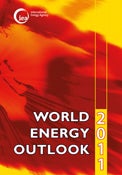By: Drew Nelson, EDF’s Clean Energy Project Manager
Yesterday the International Energy Agency (IEA) released its 2011 World Energy Outlook. The report models expected demand for energy in three scenarios: a business as usual scenario, an aggressive policy scenario to cut greenhouse gas emissions and a middle of the road scenario. As a result of this analysis, the report lays out some pretty eye-catching conclusions. The conclusion that will likely receive the most press attention is summed up by the head of the IEA, who states:
“[by] 2015 over 90% of the permissible energy sector emissions [to avoid dangerous climate change]… will already be locked in [due to investments in carbon-based energy sources]. By 2017, 100%. We can still act in time to preserve a plausible path to a sustainable energy future; but each year the necessary measures get progressively tougher and viciously more expensive.”
In other words, we only have five years to make investments in the energy sector that avoid locking us into a future of dangerous climate change. Any delay will be more expensive than taking action today. Some of the best scientists, economists, and business officials who drafted and provided comments on this report are clear – NOW is the time to make the urgent investments needed in clean technologies like wind and solar as well as smart-grid technologies to deliver that clean energy to consumers.
However, another conclusion of the report caught our eye here in EDF’s energy program. For the scenarios that were modeled, natural gas was “the only fossil fuel for which demand rises in all three” scenarios. This highlights the important role that natural gas will play as an energy source no matter how aggressive policy-makers are in reducing greenhouse gas emissions. Natural gas use will grow because deposits of “unconventional” sources of gas, like shale gas, are being discovered and drilled in almost every part of the globe. The report finds that the share of unconventional gas production in North America is projected to rise so that there will be more “unconventional” gas in North America than “conventional.”
This has broad implications. Increased shale gas means greater energy security and jobs, but also potential increased impacts in the backyards of some of our most populous states. There are significant public concerns with shale gas drilling: water quality, air pollution, noise, wildlife impacts and increased traffic are some of the most common. New data is also showing that current methane gas leakage rates are cutting into the previously accepted greenhouse gas benefits of natural gas.
Yet many oil and gas industry representatives, rather than working with the public, are dismissive of these concerns. At an industry gathering last week one representative referred to critics of shale gas as an “insurgency.” This comes on the heels of a gas company announcing that it has employed former military officials who specialize in “psychological operations” in order to help “convince” communities of the merits of shale gas. Many companies continue to refuse disclosing the chemicals they are pumping into the earth. These actions do not build trust or goodwill and could endanger further growth of shale gas. The IEA report states that growth in output of natural gas will “depend on the gas industry dealing successfully with the environmental challenges: a golden age of gas will require golden standards for production.”
At EDF we are working to develop those golden standards and ensure that shale gas is developed the right way in order to maximize the benefits of shale gas without sacrificing public health, environmental protection and safety.










